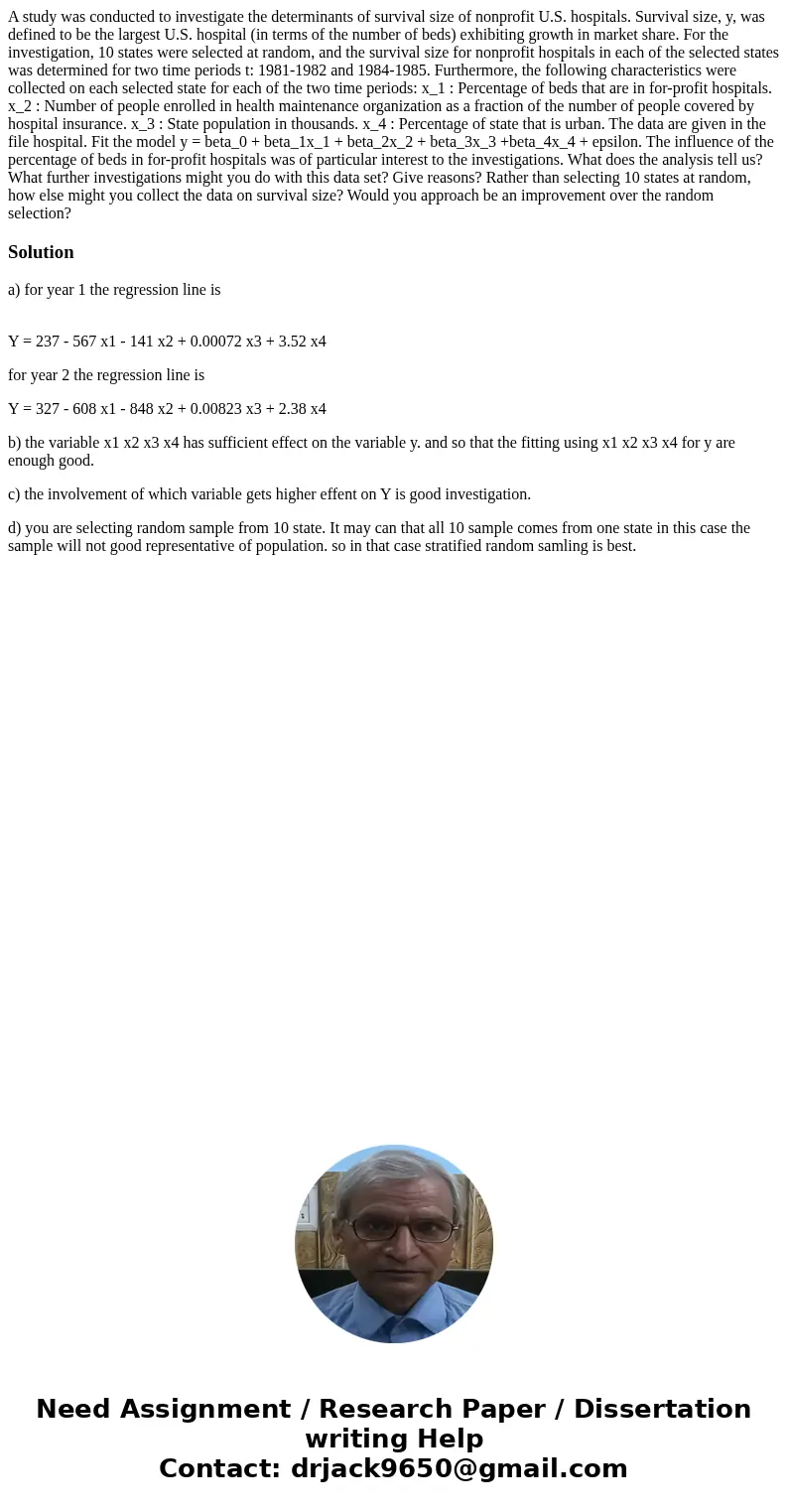A study was conducted to investigate the determinants of sur
A study was conducted to investigate the determinants of survival size of nonprofit U.S. hospitals. Survival size, y, was defined to be the largest U.S. hospital (in terms of the number of beds) exhibiting growth in market share. For the investigation, 10 states were selected at random, and the survival size for nonprofit hospitals in each of the selected states was determined for two time periods t: 1981-1982 and 1984-1985. Furthermore, the following characteristics were collected on each selected state for each of the two time periods: x_1 : Percentage of beds that are in for-profit hospitals. x_2 : Number of people enrolled in health maintenance organization as a fraction of the number of people covered by hospital insurance. x_3 : State population in thousands. x_4 : Percentage of state that is urban. The data are given in the file hospital. Fit the model y = beta_0 + beta_1x_1 + beta_2x_2 + beta_3x_3 +beta_4x_4 + epsilon. The influence of the percentage of beds in for-profit hospitals was of particular interest to the investigations. What does the analysis tell us? What further investigations might you do with this data set? Give reasons? Rather than selecting 10 states at random, how else might you collect the data on survival size? Would you approach be an improvement over the random selection?
Solution
a) for year 1 the regression line is
Y = 237 - 567 x1 - 141 x2 + 0.00072 x3 + 3.52 x4
for year 2 the regression line is
Y = 327 - 608 x1 - 848 x2 + 0.00823 x3 + 2.38 x4
b) the variable x1 x2 x3 x4 has sufficient effect on the variable y. and so that the fitting using x1 x2 x3 x4 for y are enough good.
c) the involvement of which variable gets higher effent on Y is good investigation.
d) you are selecting random sample from 10 state. It may can that all 10 sample comes from one state in this case the sample will not good representative of population. so in that case stratified random samling is best.

 Homework Sourse
Homework Sourse